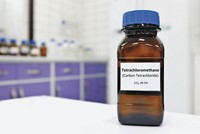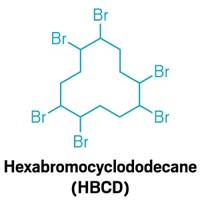Advertisement
Grab your lab coat. Let's get started
Welcome!
Welcome!
Create an account below to get 6 C&EN articles per month, receive newsletters and more - all free.
It seems this is your first time logging in online. Please enter the following information to continue.
As an ACS member you automatically get access to this site. All we need is few more details to create your reading experience.
Not you? Sign in with a different account.
Not you? Sign in with a different account.
ERROR 1
ERROR 1
ERROR 2
ERROR 2
ERROR 2
ERROR 2
ERROR 2
Password and Confirm password must match.
If you have an ACS member number, please enter it here so we can link this account to your membership. (optional)
ERROR 2
ACS values your privacy. By submitting your information, you are gaining access to C&EN and subscribing to our weekly newsletter. We use the information you provide to make your reading experience better, and we will never sell your data to third party members.
Chemical Regulation
US EPA to regulate most uses of carbon tetrachloride
Agency finds more than a dozen applications pose unreasonable risks to workers
by Britt E. Erickson
November 4, 2020
| A version of this story appeared in
Volume 98, Issue 43
The use of carbon tetrachloride as an intermediate in chemical manufacturing and in many other commercial and industrial applications presents unreasonable risks to worker health, the US Environmental Protection Agency concludes in a final risk assessment released Nov. 3. The agency plans to issue measures to mitigate the risks within the next 2 years.
The EPA found risks to workers associated with inhalation and dermal exposure for 13 industrial uses of carbon tetrachloride. However, the agency found no unreasonable risks to workers in the semiconductor industry who use carbon tetrachloride as a reactant in reactive ion etching and to people who distribute the chemical. The EPA also found no unreasonable risks to the environment or to consumers.
As it has done with other recent assessments under the Toxic Substances Control Act (TSCA), the EPA did not evaluate the risks of carbon tetrachloride on the general population from sources such as industrial emissions to air or water. Instead, the agency punted those evaluations to other EPA programs.
Carbon tetrachloride is commonly used as a feedstock to manufacture refrigerants, agricultural chemicals, chlorinated solvents, and other chemicals. The EPA considers carbon tetrachloride “likely to be carcinogenic to humans.” The substance can also have adverse effects on the central nervous system, liver, and kidneys, and irritate skin.
Most nonfeedstock uses of carbon tetrachloride were phased out under the Montreal Protocol, an international treaty that aims to protect the Earth’s stratospheric ozone layer. Carbon tetrachloride is an ozone-depleting substance. Currently there are no consumer uses of carbon tetrachloride, according to the EPA.
Carbon tetrachloride is one of the first 10 chemicals that the EPA is evaluating for risks to human health and the environment under 2016 revisions to TSCA. The agency plans to finalize all 10 assessments by the end of this year.





Join the conversation
Contact the reporter
Submit a Letter to the Editor for publication
Engage with us on Twitter